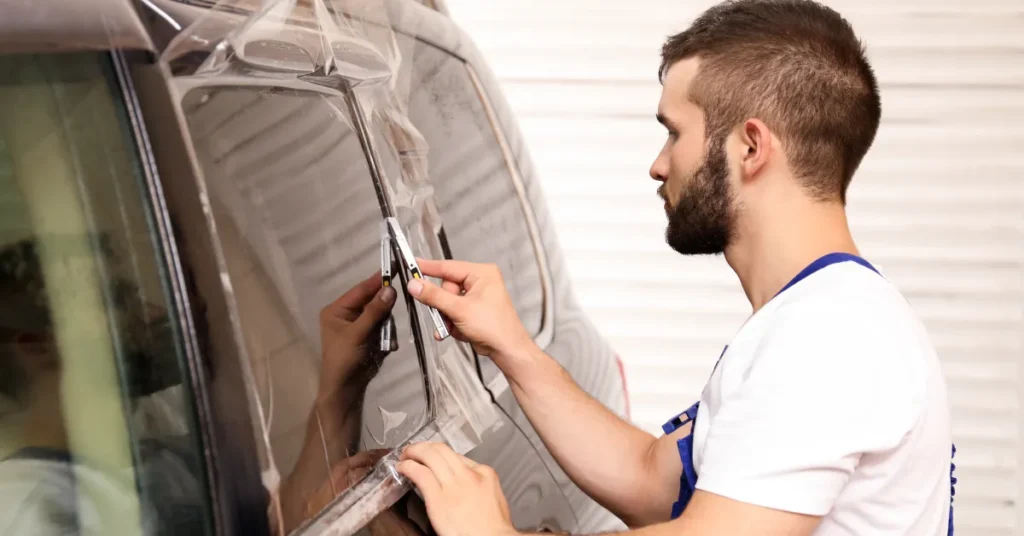Window tinting has become increasingly popular among vehicle owners due to its numerous benefits, such as enhancing privacy, reducing glare, and protecting against harmful UV rays. However, there are certain laws and regulations regarding the darkness of window tint that must be adhered to. In some cases, individuals with medical conditions may be eligible for a medical exemption, allowing them to have darker window tint than what is typically permitted. In this article, we will delve deeper into the rules and regulations surrounding medical exemptions for window tint.
The Purpose of Window Tint Laws

Before we discuss medical exemptions, let’s first understand the purpose of window tint laws. These laws vary from one jurisdiction to another, but they generally aim to ensure public safety by regulating the level of darkness allowed on vehicle windows. The darkness of window tint affects visibility, both from inside and outside the vehicle. Excessively dark tint can hinder the driver’s view of the road or impede law enforcement officers from seeing inside the vehicle.
To strike a balance between privacy and safety, window tint laws specify the maximum allowable darkness level for each window of a vehicle. These laws are enforced to prevent accidents caused by impaired visibility and to enable law enforcement officers to perform their duties effectively. By adhering to these regulations, vehicle owners can ensure their safety and the safety of others on the road.
Medical Exemptions for Window Tint

Medical exemptions provide an exception to the standard window tint laws for individuals who have specific medical conditions that require them to limit their exposure to sunlight or harsh glares. These exemptions allow individuals to have darker window tint on their vehicles for medical purposes while still complying with the law.
To qualify for a medical exemption, it is essential to obtain a doctor’s certificate or note stating the medical condition that necessitates the need for darker window tinting. This certificate serves as evidence of the individual’s medical condition and justifies their request for a medical exemption. The specific requirements and processes for obtaining a medical exemption may vary depending on the jurisdiction, so it is crucial to consult the local regulatory authority or department of motor vehicles for accurate information.
In addition to the doctor’s certificate, some jurisdictions may require additional documentation, such as medical records or a letter from a specialist. These documents provide further support for the individual’s medical condition and help the regulatory authorities make an informed decision regarding the exemption. It is important to gather all necessary documents and ensure they are up to date before applying for a medical exemption.
Common Medical Conditions Eligible for Exemption
While specific medical conditions that qualify for a window tint exemption may vary, there are several commonly accepted conditions. These conditions typically involve some sensitivity to sunlight or a need for enhanced protection against harmful UV rays.
- Photophobia: This condition causes individuals to experience extreme sensitivity to light, resulting in discomfort or even pain when exposed to bright sunlight or harsh glares. People with photophobia may have heightened sensitivity due to various underlying causes, such as migraines, eye disorders, or certain medications.
- Erythropoietic Protoporphyria: People with this rare genetic disorder are highly sensitive to sunlight, which can trigger severe pain, swelling, and blistering of the skin. The exposure to even small amounts of sunlight can cause a painful reaction, making it essential for individuals with this condition to have darker window tint to minimize their sun exposure.
- Lupus: Individuals with lupus are prone to photosensitivity, and exposure to sunlight can exacerbate their symptoms, including rashes and joint pain. Lupus is an autoimmune disease that affects various body systems, and the skin is particularly sensitive to sunlight. Darker window tint can provide added protection against UV rays and help manage the symptoms of lupus.
- Melasma: This condition causes dark patches or discoloration on the skin, and exposure to sunlight can worsen the pigmentation. Melasma is often triggered by hormonal changes, such as during pregnancy or with the use of certain medications. By having darker window tint, individuals with melasma can reduce their exposure to sunlight and minimize the worsening of their skin condition.
- Skin Cancer or History of Skin Cancer: Individuals who have undergone treatment for skin cancer or have a history of the disease may require additional protection against harmful UV rays. Window tint with a higher level of UV protection can help prevent further damage to the skin and reduce the risk of developing skin cancer again.
It is important to note that these examples are not an exhaustive list, and each jurisdiction may have its own specific criteria for medical exemptions. It is always advisable to consult with a healthcare professional and local authorities to determine eligibility. They can provide guidance on the specific medical conditions that qualify for a window tint exemption in your jurisdiction.
Process for Obtaining a Medical Exemption
To obtain a medical exemption for window tint, the following steps are generally involved:
- Consultation with a Healthcare Professional: Visit your healthcare provider or specialist who can evaluate your medical condition and determine if you qualify for a medical exemption. They will consider the nature of your condition, its impact on your daily life, and the necessity of darker window tinting for your well-being.
- Obtain the Required Certification: Request a written certificate or note from your healthcare professional, clearly stating your medical condition and the specific need for darker window tint. This document should be on their official letterhead and include their contact information for verification purposes. It is important to ensure that the certificate includes all relevant details, such as the duration of the exemption and any restrictions on the darkness level of the window tint.
- Submit the Documentation: Contact your local regulatory authority or department of motor vehicles to inquire about the specific process and requirements for submitting your medical exemption documentation. They will inform you of any additional forms or fees that may be necessary. It is crucial to follow the guidelines provided by the regulatory authority and submit all required documents in a timely manner to avoid delays in the approval process.
- Approval and Notification: Once your documentation is reviewed and approved, you will receive notification of your medical exemption status. This notification may come in the form of a permit or a sticker that should be displayed on your vehicle, indicating your compliance with the law. Make sure to carefully read the notification and understand any conditions or restrictions that apply to your exemption.
Displaying the Medical Exemption

It is crucial to display the medical exemption permit or sticker as required by your jurisdiction. This ensures that law enforcement officers can easily identify your vehicle as being compliant with the window tint laws. By displaying the permit or sticker prominently on your vehicle, you can help avoid unnecessary interactions with law enforcement and potential fines or penalties. Failure to display the necessary documentation may result in fines or penalties, even if you have a legitimate medical exemption.
Conclusion
Understanding the rules and regulations surrounding medical exemptions for window tint is important for individuals with specific medical conditions that require enhanced protection against sunlight or glares. By following the proper procedures and obtaining the necessary documentation, individuals can ensure they comply with the law while still benefiting from the advantages of window tinting. It is advisable to consult local authorities and healthcare professionals to determine eligibility and navigate the process successfully.
Note: This article is for informational purposes only and should not be considered as legal or medical advice. Regulations regarding window tint laws and medical exemptions may vary by jurisdiction, and it is essential to consult with local authorities for accurate, up-to-date information.












